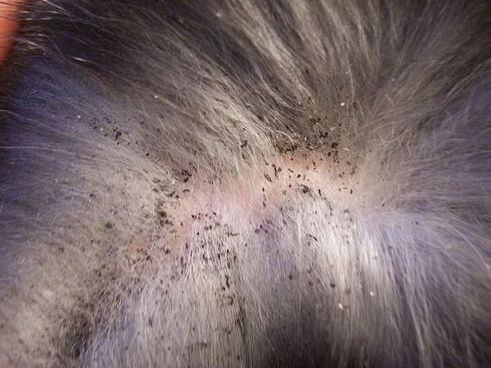Understanding Flea Infestations
The Ultimate Guide to Temperature Control. Welcome to our comprehensive guide on understanding the vital role of temperature in flea control. Fleas, those pesky parasites, thrive in certain environments, but their survival is significantly impacted by temperature variations. This introduction delves into the fascinating life cycle of fleas, highlighting their habitat preferences and underscoring the importance of temperature in managing flea infestations effectively. …Click Here to read more fascinating flea articles!
Fleas are not just annoying; they are adept survivors, especially in environments that suit their lifecycle. Their stages, from egg to adult, are influenced by ambient conditions. The significance of understanding this aspect cannot be overstated, as it’s crucial in devising effective control strategies. By exploring the intricate relationship between fleas and their environmental conditions, we equip ourselves with the knowledge to combat flea infestations more effectively.

In this guide, we uncover how temperature plays a pivotal role in the battle against fleas. It’s a tool in our arsenal that, when used wisely, can turn the tide in our favor. Stay tuned as we delve deeper into the science behind temperature’s impact on fleas, providing you with practical solutions to keep your home flea-free.
For a deeper understanding of flea biology and behavior, I recommend visiting the Centers for Disease Control and Prevention (CDC) page on fleas. This reputable source offers valuable insights that complement our discussion, ensuring you’re well-informed in your approach to flea control.
The Science Behind Temperature and Flea Survival
In our journey to uncover the decisive role of temperature in flea eradication, we delve into the intriguing world of flea biology. The survival and proliferation of fleas are closely tied to specific environmental conditions, particularly temperature. Let’s explore how these tiny pests interact with their surroundings and why temperature is a key factor in controlling their population.
Optimal Temperatures for Flea Survival and Reproduction
Fleas prefer warm, humid climates, thriving best in temperatures ranging from 70 to 85 degrees Fahrenheit (21 to 29 degrees Celsius). This temperature range not only supports their survival but also accelerates their breeding cycle. Understanding this can guide us in creating environments less conducive to flea proliferation.
The Impact of Extreme Temperatures on Fleas
However, when exposed to temperatures outside their comfort zone, fleas become vulnerable. Both excessively high and low temperatures can disrupt their life cycle. Adult fleas, larvae, and eggs react differently to these extremes, offering us a strategic advantage in targeting them.
The Role of Humidity in Conjunction with Temperature
It’s not just the heat or cold that affects fleas, but also the humidity levels. High humidity, coupled with optimal temperatures, creates an ideal breeding ground for fleas. Conversely, low humidity levels can hinder their development, especially when combined with temperature extremes.
By understanding these key factors, we gain valuable insights into effective flea management strategies. Our approach to controlling flea populations must consider both temperature and humidity, using them as tools to disrupt the life cycle of these pests. Armed with this knowledge, we move towards practical solutions, leveraging temperature as a means to create flea-hostile environments. For further reading on the influence of environmental factors on flea survival, the Environmental Protection Agency (EPA) provides extensive information on pest control, including strategies that focus on managing the living conditions of these pests.
The Heat Factor: Temperatures That Kill Fleas
In this crucial section, we focus on the specific temperatures that spell doom for fleas. Understanding these thresholds is key to employing temperature as an effective tool in our fight against these persistent pests. We’ll break down the exact heat levels required to eradicate fleas at different stages of their life cycle and how you can apply this knowledge in your own battle against fleas.
Exact Temperatures That Kill Adult Fleas, Larvae, and Eggs
Research reveals that adult fleas and larvae are highly susceptible to temperatures above 95 degrees Fahrenheit (35 degrees Celsius). Prolonged exposure to such heat can be lethal. Flea eggs, on the other hand, require slightly higher temperatures to be effectively neutralized. This understanding allows us to target fleas more precisely during extermination efforts.
Duration of Exposure Required for Effective Eradication
It’s not just about hitting the right temperatures; the duration of exposure is equally critical. Fleas need to be exposed to these high temperatures for a minimum of 48 hours to ensure a comprehensive kill-off. This sustained exposure is vital to penetrate into the nooks and crannies where fleas and their eggs might be hiding.
Practical Methods to Achieve These Temperatures at Home
Implementing this knowledge at home can be done in various ways. Simple strategies include using steam cleaners on carpets and upholstery, as steam can reach temperatures high enough to kill fleas. Washing bedding and clothing at high temperatures is also effective. It’s about strategically applying heat where fleas are most likely to dwell.
Armed with this information, homeowners can take proactive steps to create environments inhospitable to fleas. This section not only educates but empowers readers with actionable methods to tackle flea infestations head-on. For further guidance on practical temperature-based flea control methods, the University of Kentucky’s College of Agriculture, Food and Environment offers a detailed guide on flea control, providing additional insights into effective temperature utilization in managing flea populations.
The Cold Truth: Can Freezing Temperatures Eliminate Fleas?
In our exploration of temperature’s impact on fleas, we now turn to the chilling effects of cold. While heat proves a formidable foe against fleas, freezing temperatures offer another angle of attack. This section delves into how cold temperatures can be used in flea eradication and the limitations of this approach, providing a comprehensive view of temperature-based flea control strategies.
Threshold Temperatures and Exposure Time for Cold Treatment

Fleas, particularly in their adult stage, are less tolerant of cold. Research indicates that temperatures below 37 degrees Fahrenheit (3 degrees Celsius) can be lethal to fleas. However, the exposure time needed for effective flea control in cold conditions is considerably longer than with heat, often requiring several days of continuous exposure.
Limitations and Considerations of Using Cold to Kill Fleas
While cold temperatures can be effective, there are significant limitations. Fleas often reside in warm, protected areas of a home, where cold may not penetrate effectively. Moreover, flea eggs and larvae might survive in colder temperatures, leading to a resurgence once conditions warm up. This aspect is crucial in evaluating the effectiveness of cold treatments.
Comparing Effectiveness: Heat vs. Cold Treatments
When choosing between heat and cold treatments, consider the environment and feasibility. Heat treatment is often more practical and effective for indoor environments, as achieving and maintaining low temperatures indoors can be challenging and less energy-efficient. In contrast, cold treatments might be more suitable for treating items or areas that can be safely exposed to freezing conditions for extended periods.
Understanding the dynamics of both heat and cold in flea control allows for a more tailored approach to combating these pests. While each method has its strengths and limitations, combining them with other strategies can lead to a more effective overall flea management plan. To deepen your understanding of the efficacy of cold treatments, the National Pesticide Information Center provides valuable insights into various pest control methods, including the role of temperature in managing flea populations.
Comprehensive Temperature Management for Flea Control
In our comprehensive approach to flea control, it’s crucial to integrate temperature management into a holistic plan. This involves not just periodic treatments, but also maintaining an environment that’s consistently unfavorable to fleas. This section provides actionable tips for managing temperatures effectively in your home and environment, thus preventing flea infestations and ensuring a long-term, flea-free living space.
Integrating Temperature Control into a Holistic Flea Management Plan
Effective flea control is about more than just reactive measures; it’s about creating an environment where fleas cannot thrive. This involves regulating your home’s temperature and humidity levels to fall outside the optimal range for flea survival and reproduction. Regular monitoring and adjustments play a key role in this strategy.
Tips for Maintaining Flea-Unfriendly Temperatures in Your Environment
Here are practical ways to keep your home at flea-unfriendly temperatures:
- Utilize air conditioning to maintain a cooler, less humid environment.
- Regularly wash bedding and pet areas with hot water.
- Employ dehumidifiers in damp areas of your home to reduce humidity levels.
Prevention Strategies: Avoiding Favorable Conditions for Flea Resurgence
Prevention is always better than cure. To keep fleas at bay, focus on:
- Regular cleaning and vacuuming, especially in areas where pets spend time.
- Keeping your pets on a regular flea prevention regimen.
- Sealing cracks and openings to prevent wild animals, which can be flea carriers, from entering your home.
By adopting these strategies, you can create an environment that’s not just momentarily free of fleas, but consistently hostile to their presence. This proactive approach is key in ensuring your home remains a flea-free zone. For more detailed guidance on creating and maintaining a flea-unfriendly environment, refer to the Environmental Protection Agency’s comprehensive resources on pest control, which include a wealth of information on environmental management for pest prevention.
Conclusion: Empowering Flea-Free Environments Through Temperature Control
As we conclude our in-depth exploration of temperature’s role in flea control, it’s crucial to recap the key temperatures and methods we’ve discussed for effective flea eradication. This final section aims to reinforce the importance of proactive and consistent temperature management in your fight against fleas. By applying the knowledge and strategies outlined, you can empower yourself to maintain a flea-free environment, ensuring the health and comfort of your household.
Recap of Key Temperatures and Methods for Flea Eradication
Remember, fleas are most vulnerable to temperatures above 95 degrees Fahrenheit (35 degrees Celsius) and below 37 degrees Fahrenheit (3 degrees Celsius). Utilizing heat treatments like steam cleaning or washing fabrics in hot water can effectively kill adult fleas, larvae, and eggs. On the other hand, cold treatments require prolonged exposure and are more suitable for specific situations.
Encouraging Proactive and Consistent Temperature Management
Consistent temperature management is a cornerstone of effective flea control. Regular monitoring and adjustment of your home’s environment to keep it outside the flea-friendly temperature and humidity range will prevent infestations. This involves using air conditioning, dehumidifiers, and maintaining cleanliness and hygiene.
Final Thoughts: Emphasizing Temperature’s Role in Effective Flea Control
In conclusion, temperature plays a pivotal role in controlling flea populations. While immediate treatments are effective, long-term prevention through environmental management is key to avoiding future infestations. Implementing these strategies will not only address current flea problems but also prevent their recurrence, ensuring a comfortable, flea-free home.
This comprehensive guide provides you with the knowledge and tools needed to tackle flea infestations effectively. For additional resources and support in flea control and prevention, the American Veterinary Medical Association offers extensive information on pet health and pest control, including best practices for maintaining a pest-free environment. Armed with this information, you are now well-equipped to create and sustain a flea-free living space.